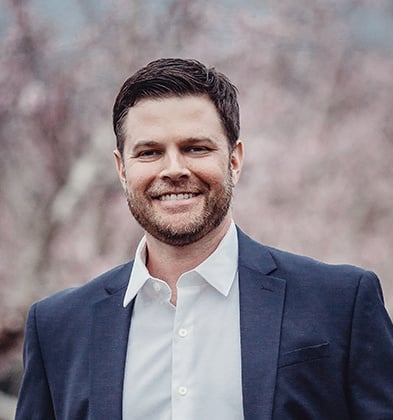TABLE OF CONTENTS
Buyer’s Journey Terms | Inbound Campaign Terms | CRM Terms
When you work with an inbound marketing agency, conversations can sometimes be confusing because it’s full of terminology you don’t use in your day-to-day.
For this reason, we’ve put together a list of terms we typically throw around while we’re working with a new or current client. You can use it as a reference, but always feel free to ask us if you’re confused.
HubSpot Terminology for the Buyer’s Journey
The buyer’s journey is the process buyers go through to become aware of, consider, and decide to purchase a new product or service. It’s broken into three stages:
Awareness
During the awareness stage, the buyer realizes they have a problem through online research.
Consideration
During the consideration stage, the buyer determines their problem and researches options to fix it.
Decision
During the decision stage, the buyer chooses a solution.
MARKETING PRO TIP
Educational content and conversion opportunities are different for every stage of the buyers journey.
As you can see above, in each stage the buyer is looking for different content or conversion opportunities to educate them further or to contact your team.
Awareness Stage Content
During this stage, a prospect is looking for high-level (also known as the top of the funnel) educational content to help them diagnose their problem. This type of content is typically in the form of blog posts, eBooks, and checklists.
Consideration Stage Content
If a prospect is on your website and looking for consideration stage content, this means you’ve already caught their attention. They know what type of problem they have, so they’re researching solutions.
This type of content is usually in the form of webinars, comparison white papers, videos, and live interactions.
Decision Stage Content
During the decision stage, buyers have already decided on their solution. They’re looking for comparison and pros/cons content. This is also a great stage to have case studies and testimonials on your website.
HubSpot Terminology for an Inbound Campaign
Each piece of content in the buyer’s journey should connect to a campaign. A campaign typically consists of the following elements:
Landing Page
A landing page is where a visitor lands after they click a link in an email, ad, or CTA on your website. It’s a stand-alone website page that was created specifically for a campaign with one goal.
Thank You Page
A thank you page is the website page you see directly after filling out a form on a landing page. It’s the final stage in your conversion process.
Call to Action (CTA)
A call to action is a button or image that a prospect clicks on to take the action you want them to take.
The goal of every inbound marketing campaign is to produce leads. The leads that convert on your site are then added to your customer relationship management (CRM) platform so you can track them.
HubSpot Terminology for Customer Relationship Management
LIFECYCLE STAGE
In the HubSpot CRM, a lifecycle stage refers to where the prospect is in the sales process, from a new lead to a closed client. This contact property contains the following eight stages:

1. Subscriber
Subscribers are contacts who are aware of your business and have filled out a form to subscribe to your email newsletter.
2. Lead
Leads are contacts who have shown interest in your company by downloading a content offer.
3. Marketing-Qualified Lead
Marketing-qualified leads (MQLs) are contacts who have engaged with your business's marketing efforts but are still not ready to have a call with your sales rep.
4. Sales-Qualified Lead
Sales-qualified leads (SQLs) are contacts who are ready to have a sales conversation. This is obvious to your sales team because the contact has filled out your Request for Quote (RFQ) or Contact Us form with a direct question or request.
5. Opportunity
Opportunities are contacts who are real opportunities for your business.
6. Customer
Customers are contacts with closed deals.
7. Evangelist
Evangelists are customers who advocate for your business and provide you with referrals.
8. Other
This represents a stage you can use when your lead doesn’t fit into any of the above stages.
LEAD STATUS
Your lead status property describes the stages within your SQL lifecycle stage. This CRM property helps you to prioritize your outreach by knowing the sales activities for these leads.
These fields are customizable in HubSpot and can be updated to match the activities your sales team regularly uses. HubSpot’s default lead status options are:
New
Leads you have not reached out to yet.
Attempted to Contact
Leads that you’ve reached out to but haven’t connected with yet.
Connected
Leads you’ve been able to connect with, but there are no opportunities to close a deal yet.
Open Deal
Leads that have an interest in buying your product or service.
Unqualified
Leads that were not ready to purchase. This can be for a number of reasons, however, it can be an opportunity to give the lead back to your marketing team to nurture.
Looking for More Inbound Marketing Help?
Are you doing research for your own inbound marketing campaign or HubSpot CRM implementation? Book a 20-minute marketing consultation so we can uncover what you’re doing well, what may need improvement, and how to optimize your efforts.



